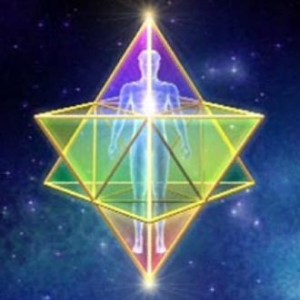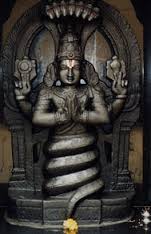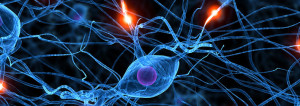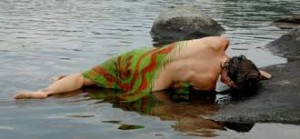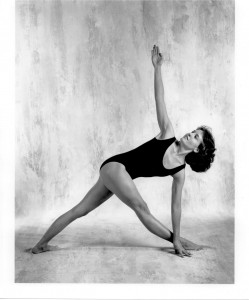The Big Picture
Yoga is the exploration of: Awakening and stabilizing that Awakening, aka: Enlightenment, Self Realization, Moksha, Freedom from Suffering, etc, and involves Awareness, Attention, Intention, and Identification. This awakening allows our own unique creativity to emerge as a crucial component to the on-going planetary and Cosmic awakening arising in the fullness of this moment.
This exploration requires:
1. an ability to: differentiate the two perspectives available to humans:
Purusha and Prakriti, Being and Becoming, Luminous Emptiness and Creation, Now and Time, The Changeless and Impermanence, etc; cultivate each as a proficiency or skill, and integrate them into …
2. the realization of Oneness, of Non-duality, Advaita. That the two points of view, while differentiated, are never separate from each other. Purnamadah,  purnamidam.
purnamidam.
3. the recognition that the “I am”, the Self, Atman, ‘drashtuh svarupe‘, where the Infinite emerges into form as Soul, is eternally unbounded, luminous and the source of all creativity.
4. the understanding that life conditions, experiences and karma have created patterns of belief, thought and emotional reactivity that can obscure or completely hide the inner light of soul and inhibit creativity.
5. that there are skillful means, upayas, that specifically address these obscurations and reveal the inner light. (Citta vrtti nirodha, sthira sukham asanam, Mindfulness, etc.
6. that these obscurations appear as either rigidity, an imbalance of tamas, or chaos, an imbalance of rajas; or possibly combinations of the two. And they all involve a confusion of self-identity. (vrtti sarupyam itaratra.)
7. Somatic practices such as hatha yoga transform these imbalances back into coherence and harmony, sattva, by bringing attention/awareness to the deeper structures of the nervous system, including the gut body and cardiac nervous system, as well as the other physiological systems, which have their own inherent intelligence that moves toward healing and wholeness. Surrender into this awakened intelligence ( ishvara pranidhana, II-47: prayatna shayithilyaananta samapattibhyam) dissolves (nirodha) the self confusion (avidya), and allows the light of the soul to shine clearly (I-3: tada drashtuh svarupe avasthanam,) and Divine creativty to emerge as your life journey.
8. This process of healing and awakening creativity is an evolutionary impulse rippling throughout the entire Universe. (I-40: paramaanu-parama-mahattvaanto’sya vashikaarah
The Details
How can we work with chakras and vayus ‘on the mat’ to transform psychological/emotional/spiritual confusion into light?
There are seven major energy centers in the human, known as chakras or energy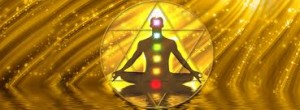 wheels. As somanauts, we bring the buddhi (as light) to each and explore them as regions of movement and coordination of movements. This allows ‘enlightened posture and movements, or
wheels. As somanauts, we bring the buddhi (as light) to each and explore them as regions of movement and coordination of movements. This allows ‘enlightened posture and movements, or  movement/posture as Divine Prayer. When all seven have been turned on (lit up), there is a clear sense of the spinal axis as emerging from the chakra line, like beads of light on a string. This of course, is refined in tadasana.
movement/posture as Divine Prayer. When all seven have been turned on (lit up), there is a clear sense of the spinal axis as emerging from the chakra line, like beads of light on a string. This of course, is refined in tadasana.
Our spiritual home base.
4th chakra: The center of our universe, where love, wisdom and compassion are awakened and sustained and all the chakras learn to work together. We begin here, and return again and again until we are rooted here as a felt sense in the body deeply linked to Mother Earth and Father Sky. It also supports heart and lungs, and feeds energy to upper limbs and head for movement and support and integrates the subtle spinal movements with the breath. Feel the heart chakra as a point where the infinite expands into form and keeps going. It’s a continuous opening.
Lower chakras:
1st chakra: tail and legs: the three pillars of support in tadasana, and the anal mouth, the root of the gut body. The first cosmic gate, opening a connection to Mother Earth. 2nd chakra: Sacral region: small movements at sacro-illiac joints and the bladder as an organ of support and vibrancy. 3rd chakra: upper abdominal region: liver, kidneys, spleen, stomach, adrenals, descending fibers of the diaphragm, T10 – L3 and more. Modulates spinal curves where the lumbar undergoes large changes in shape. We’ll see more below when we get to the samana vayu.
Upper chakras.
5th chakra: continues support and movement of head, jaws, mouth, and tongue. Integrates cervical and thoracic curves in movement and support. 6th chakra: inner ears, third eye, pituitary center. Subtle movement of skull on C-1, a place often stuck. Cranial-sacral work involves integration skull and sacrum, 6th and 2nd chakras in subtle inner waves and inner energy fields. 7th chakra: crown, above the skull, organizes movements that totally release neck. The second cosmic gate, opening connections to the heavenly realms/Father Sky.
Now we add to the mix the physiological/spiritual organizing energies of aliveness known as the Five Prana Vayus. These are:
Prana = what we take in / expansion / upper body centered
Apana = what we get rid of / condensing / lower body centered
Samana = what we choose to keep / the balancer / middle body centered
Vyana: distributing the good stuff to all cells and tissues
Udana: growth and development on biological, emotional/psychological/spiritual levels.
Can we ‘feel’ these five organizing activities as movements of energy and energetic fields? Can we integrate these with the chakras? This will bring us to the basic laws of living structures and the effortless support they offer. Then our poses and practice in asana become divine prayers, healing and awakening creativity.
 The primary organizing activity in the Universe is the balance between expanding and condensing. This is the yin/yang of Taoism and Chinese medicine, and also ‘Tensegrity’ as articulated by Buckminster Fuller, Tom Myers etc. In a tensegrity structure, like the human body, the compression elements push out against the tension elements, which in turn pull in against the compression elements. B.K.S. Iyengar describes asana as the balancing of centripetal (toward the center) and centrifugal (away from center) forces. (Light on the Yoga Sutras on Patanjali). A star, like our sun, is delicately balanced between the intense condensing caused by gravity and the equally intense expansion created by the nuclear fire. Our life flows from this dynamic relationship at all levels of reality.
The primary organizing activity in the Universe is the balance between expanding and condensing. This is the yin/yang of Taoism and Chinese medicine, and also ‘Tensegrity’ as articulated by Buckminster Fuller, Tom Myers etc. In a tensegrity structure, like the human body, the compression elements push out against the tension elements, which in turn pull in against the compression elements. B.K.S. Iyengar describes asana as the balancing of centripetal (toward the center) and centrifugal (away from center) forces. (Light on the Yoga Sutras on Patanjali). A star, like our sun, is delicately balanced between the intense condensing caused by gravity and the equally intense expansion created by the nuclear fire. Our life flows from this dynamic relationship at all levels of reality.
As the prana vayu governs taking in, we can experience it as an expanding energy field centered in the chest (fourth chakra) to open heart and lungs. It is the yang, or centrifugal energy. Imagine this as a radial expansion, like the  opening of the hoberman sphere. In kinesiology, we feel prana also in supporting the action and movement of the arms, ribs and head.
opening of the hoberman sphere. In kinesiology, we feel prana also in supporting the action and movement of the arms, ribs and head.
The apana vayu governs releasing out and thus is a condensing or squeezing field centered in the lower body (first and second chakras). It is the yin, or centripetal energy. When functioning in a healthy manner, apana squeezes out solid and liquid waste from below, but also helps to squeeze the air out of the lungs. Kinesiologically, apana can be felt supporting the action and movement of the pelvis, legs and tail, maintaining grounding energy in posture and movement.
Samana is the balancer. It integrates the upper body action of taking in with the lower body action of squeezing out. Usually described in digestive terms, as it is a third chakra energy, somanauts explore the samana’s role in balancing the upper body and lower body in movement. It’s role is to integrate the movements of upper body/head and arms with movements of the lower body/legs and tail like in the cheetah. Notice the cheetah is actually flying more than running. Notice also the coiling and uncoiling of the core as it oscillates between flexion and extension. This is the mammalian action will will explore first in the asanas.
explore the samana’s role in balancing the upper body and lower body in movement. It’s role is to integrate the movements of upper body/head and arms with movements of the lower body/legs and tail like in the cheetah. Notice the cheetah is actually flying more than running. Notice also the coiling and uncoiling of the core as it oscillates between flexion and extension. This is the mammalian action will will explore first in the asanas.
Ideally there is a single integration of all five vayus, the prana, apana and samana riding on vyana and allowing udana to function at highest most refined level possible. Iyengar describes this as samyama in asana, where organs of action, organs of perception and intelligence (buddhi) integrate into a single conscious movement in the entire body.
Now we add the poses. Take what we have covered above and integrate with what follows.
Integration through the Standing Poses
Lesson 5 of the basic course in my home study section of the site covers this,
(and saves me the need to rewrite it all! ) so please click here to continue.
Flipping the Dog (Please click here.)
Into Inversions
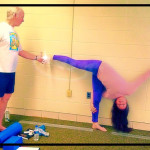
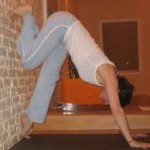
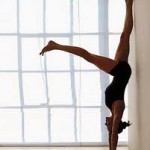

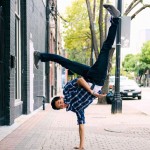
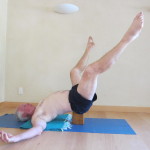
Preview of Coming Attractions
